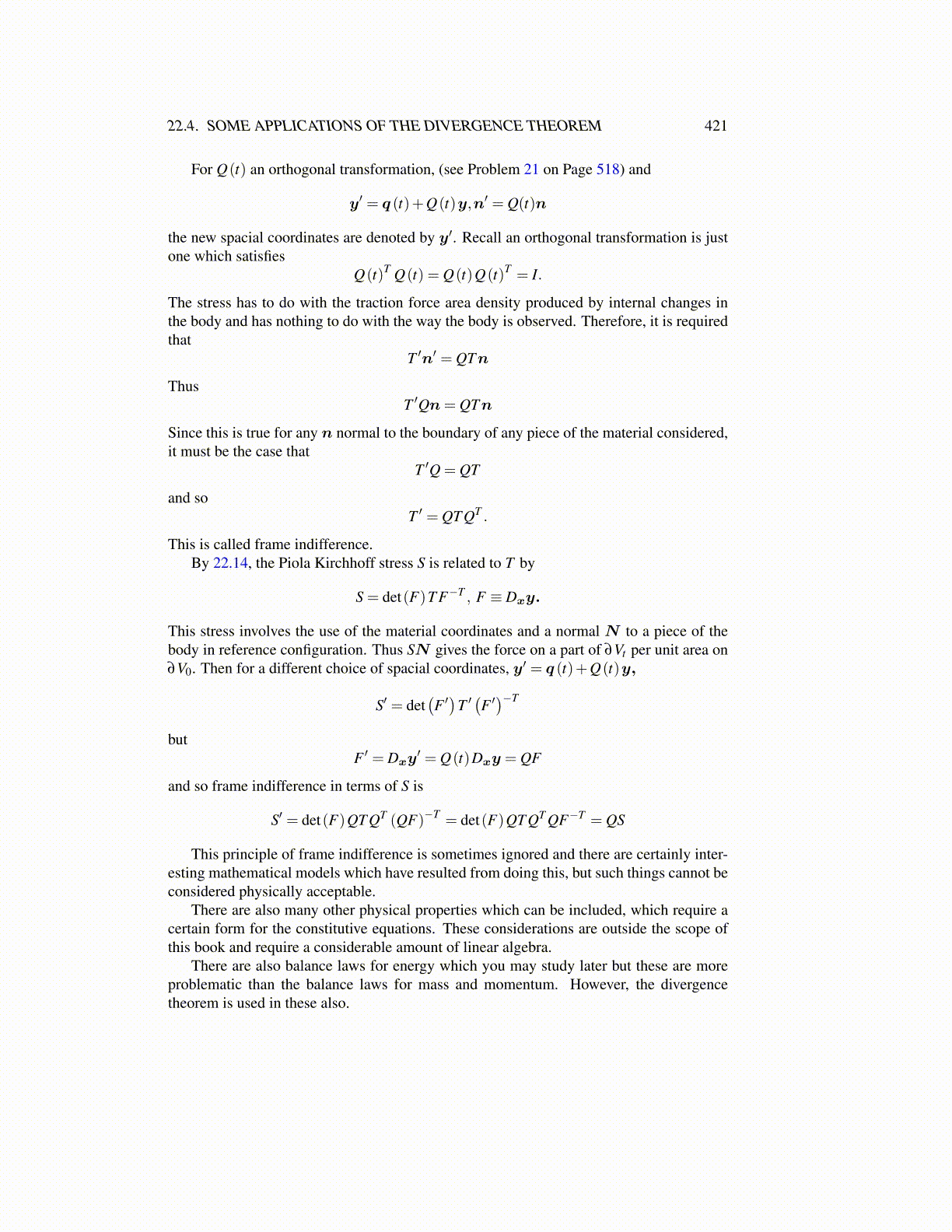
22.4. SOME APPLICATIONS OF THE DIVERGENCE THEOREM 421
For Q(t) an orthogonal transformation, (see Problem 21 on Page 518) and
y′ = q (t)+Q(t)y,n′ = Q(t)n
the new spacial coordinates are denoted by y′. Recall an orthogonal transformation is justone which satisfies
Q(t)T Q(t) = Q(t)Q(t)T = I.
The stress has to do with the traction force area density produced by internal changes inthe body and has nothing to do with the way the body is observed. Therefore, it is requiredthat
T ′n′ = QTn
ThusT ′Qn= QTn
Since this is true for any n normal to the boundary of any piece of the material considered,it must be the case that
T ′Q = QT
and soT ′ = QT QT .
This is called frame indifference.By 22.14, the Piola Kirchhoff stress S is related to T by
S = det(F)T F−T , F ≡ Dxy.
This stress involves the use of the material coordinates and a normal N to a piece of thebody in reference configuration. Thus SN gives the force on a part of ∂Vt per unit area on∂V0. Then for a different choice of spacial coordinates, y′ = q (t)+Q(t)y,
S′ = det(F ′)
T ′(F ′)−T
butF ′ = Dxy
′ = Q(t)Dxy = QF
and so frame indifference in terms of S is
S′ = det(F)QT QT (QF)−T = det(F)QT QT QF−T = QS
This principle of frame indifference is sometimes ignored and there are certainly inter-esting mathematical models which have resulted from doing this, but such things cannot beconsidered physically acceptable.
There are also many other physical properties which can be included, which require acertain form for the constitutive equations. These considerations are outside the scope ofthis book and require a considerable amount of linear algebra.
There are also balance laws for energy which you may study later but these are moreproblematic than the balance laws for mass and momentum. However, the divergencetheorem is used in these also.